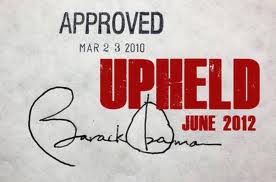But only if you do it.
We learned late last week that the decision by 24 states to reject Obamacare’s Medicaid expansion comes as a startling cost — $423.6 billion in lost federal funds from 2013 to 2022, according to researchers at the Urban Institute.
So how are states justifying their decisions to leave that much federal money on the table? One of their main arguments is that the federal government will eventually renege on its generous funding commitment to the Medicaid expansion. But based on the 49-year history of the Medicaid program, that claim doesn’t hold up, according to Urban Institute researchers in a finding that hasn’t received as much attention.
Here’s how Medicaid funding works: The federal government on average pays 57 percent of the traditional Medicaid program’s costs, while the states finance the rest (though the federal reimbursement rate varies by state). The federal match just for the Medicaid expansion population, however, is significantly more generous. The feds pay 100 percent of those costs through 2016, and the federal match rate is gradually lowered to 90 percent by 2020 and is supposed to stay there.
States opposing the Affordable Care Act have expressed skepticism that the federal government will be able to maintain such a high funding level amid future budget pressures. But the Urban researchers found that of the 100-plus cuts the federal government has actually made to the Medicaid program since 1980, lawmakers just once reduced the federal share of Medicaid financing — and that was in 1981. Other federal cuts have been to services, payments to providers, or in program eligibility.
“More recent budget bills actually raised the federal Medicaid share, even while making other federal Medicaid cuts,” Urban researchers wrote in the study, which was funded by the Robert Wood Johnson Foundation.
Further, lawmakers won’t find much to cut if they looked to federal funding for the Medicaid expansion. Less than 7.4 percent of federal Medicaid spending over the next decade comes from the bonus federal match for the expansion population, according to Urban researchers’ calculations based on Congressional Budget Office projections.
Via Forbes, you can see that Urban Institute report here. Ed Kilgore adds a bit of extra context.
It should be mentioned that the 1981 match-rate cut (technically, a reduction in federal reimbursement for a limited period of time, not an actual change in the underlying match) was at the insistence not of deceptive liberals but of the sainted Ronald Reagan. Indeed, liberals, led by Henry Waxman, engineered a long series of “super-matches”–increases in the federal match rate for Medicaid coverage of specific services or populations–during the 1980s and 1990s.
The big thing to remember here is that liberals want expanded Medicaid coverage, and are willing to pay for it at the federal level. The whole bait-and-switch meme behind Republican resistance to the expansion at the state level lacks logical as well as historical support.
And that’s exactly why this isn’t a question of economics, where the answer is clear, but of politics, where it’s equally clear in the other direction. Like I said, just a reminder in case you still needed one.

